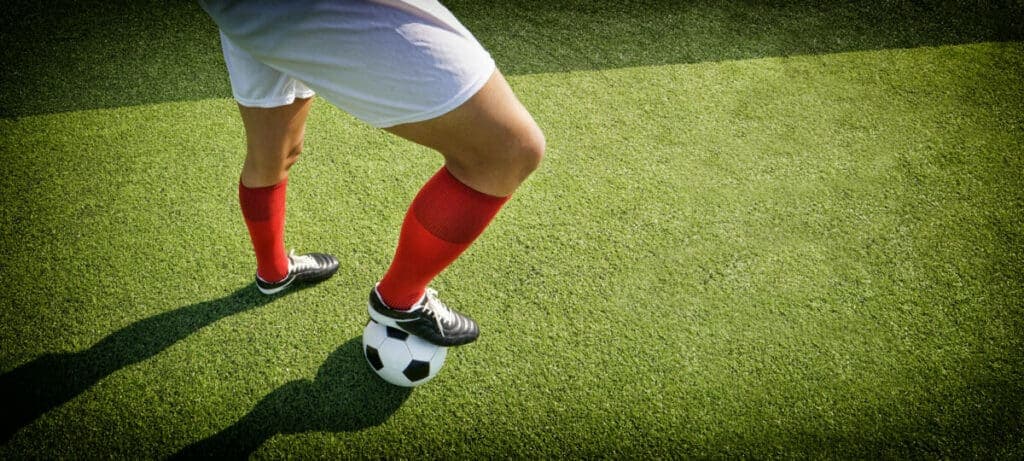How long does it take to get soccer fit
It’s no question that playing soccer is very physically demanding, but how much training will you need to get physically fit enough to play soccer effectively? How long will it take? We’re here to answer all your questions about getting fit for soccer and how much time you should put aside for soccer conditioning.

To get physically fit for soccer, a player should train for at least one month, or for a maximum of six months. The time it takes to get fit for soccer depends on the player’s current personal fitness as well as the intensity of the soccer league they’re planning to play for.
Keep reading to find out how you can get fit for soccer and become one of the most successful players on your team!
How long will it take to train for soccer?
Training and practice are essential parts of being able to perform well in soccer because without the training and practice you won’t be able to endure the constant movement and speed of playing a 90-minute soccer game, nor will your body be used to that kind of physical demand on your muscles, joints, heart, lungs, and body flexibility.

It can take between 1 and 6 months of training to become physically fit enough to play soccer and lead a successful season. The amount of training will depend on whether or not you’ve played soccer before, how physically fit you already are when you start your training, and the intensity of the soccer league you’re planning to play for is going to require of players.
For example, if you’re training to play for a Division 1 college soccer team, it’s going to require more extensive training to really heighten your skills than a Division 2 college team would. This is because Division 1 soccer demands more of a player physically than D2, D2 demands more than D3, and D3 demands more than high school soccer.
Physical attributes that soccer demands of players
In addition to the skills you will need to have in soccer that can really only be developed by applying them in soccer games and practices, such as technical skills and tactical ability, there are some physical attributes that you’ll need to train and develop prior to soccer season. These are all attributes that soccer demands of players in order to play well, so these are things you’ll want to focus on during your training.
Physical attributes that soccer players should develop include being able to run and maneuver at high speeds, the ability to accelerate and decelerate their speed rapidly, as well as resilience and endurance. These are all qualities that you won’t be able to fully develop from fitness training alone, but by playing soccer games as well. Depending on your own ability, your fitness training should allow you to work on these skills so that you can continue to fine-tune those skills as you play practice games, competitions, and championships.
More specifically, outside of soccer, you’ll want to practice cardiovascular training and building your muscles, especially in the core and abdominals, as well as in the legs. But, don’t just focus on only those areas of muscle, you should do a bit of weight lifting or pull-ups to train your body to build arm muscle too. Working on your upper body strength will help you keep your balance during a game and it will cause you to run faster.
Consider your own physical fitness condition

When it comes to deciding how soon before a soccer season you’ll want to start training (this means starting specifically soccer conditioning in addition to your already implemented workout routine) it will depend on your current physical fitness condition. For most people, it will take a month or a month and a half, especially if they’ve already played a soccer season and trained for it within the past few years.
But don’t sell yourself short if you need a bit more training than that. It’s good to always plan ahead to start training before the season begins, and you don’t want to overtrain. Remember that you can continue your soccer conditioning during the season to ensure you keep up on it, as well as your regular workout routine. Soccer training prior to the season’s start will serve as a warmup for the season, in addition to individual game
practices and warmups, so training is an important factor in the preparation for the season and making sure that you’re physically fit to endure the physical demands of a soccer game, and to do it without as much effort as someone who received no training.
The best way to understand how long you’ll need to train for before the season is to figure out your body fat percentage. You can find a body fat calculator online. There is no ideal body fat percentage to play soccer well, but determining where you lie on that scale will help you to understand whether you need to train for more or fewer months.
The body fat calculator is a general indication of your personal fitness, and will help you to understand what kind of training you’ll need to to improve your soccer playing performance. For example, someone who is medically obese for their age and gender would need to focus more on cardio exercise, whereas someone who is underweight for their age and gender would need to focus more on building muscle and gaining a bit of weight to put them in the fit category.
Avoid overtraining
Something you should avoid while training for soccer is overtraining. If you do so, it can lead to overstimulation of the joints and straining of the muscles, which can make you very sore and have a more difficult time performing well in games. You should only train for as long as and as frequently as your body allows you to.
You can get fitness advice from a coach, personal trainer, or doctor, and they will help you determine how often you should workout, how long you should train, and what kind of exercises you should focus based on your personal fitness condition.
Just like you would train for a marathon or try out a new workout routine, you should always give your body plenty of rest, especially at the beginning, slowly decreasing time between workouts as you get closer to the season.
What if you’ve played soccer before?

Whether or not you’ve played a season of soccer will also help you to determine how long you’ll need to train before the newest season starts. If you’ve never played soccer before, you’ll probably want to take closer to the 6 months to train (depending on how often or how long you’ve kept up on your personal fitness outside of soccer), whereas if you’ve played soccer before, you can take less time than that, depending on how long it has been since you’ve played and how many seasons you’ve played soccer for.
If you played the last season, as well as several other consecutive seasons the years prior, then you can get away with training for just a month or two. If you’ve played soccer before, but its been a few years since you last played, then you’ll probably want to train for 3 to 4 months before the season begins.
Those who have played a full season or more of soccer can play well because their bodies use muscle memory to be able to move the way that experienced soccer players move, and even if it’s been a few years, they can easily gain back those skills with a bit of training so that they’re prepared for the season.
The best ways to train for soccer season
Your coach or personal trainer can help you determine the best way to train for soccer season. Some of the most common way to train for soccer, however, include sprinting drills, weight training, running or cross country, improving acceleration and change of direction, core strengthening and stabilization, and resistance training.
Whatever form of training you choose, always make sure you get the necessary amount of rest between sets, runs, and workouts. Acknowledging which type of physical attribute needs the most development before the season starts will help you determine which type of training(s) you should focus on, but every person should do a little bit of all of these.
